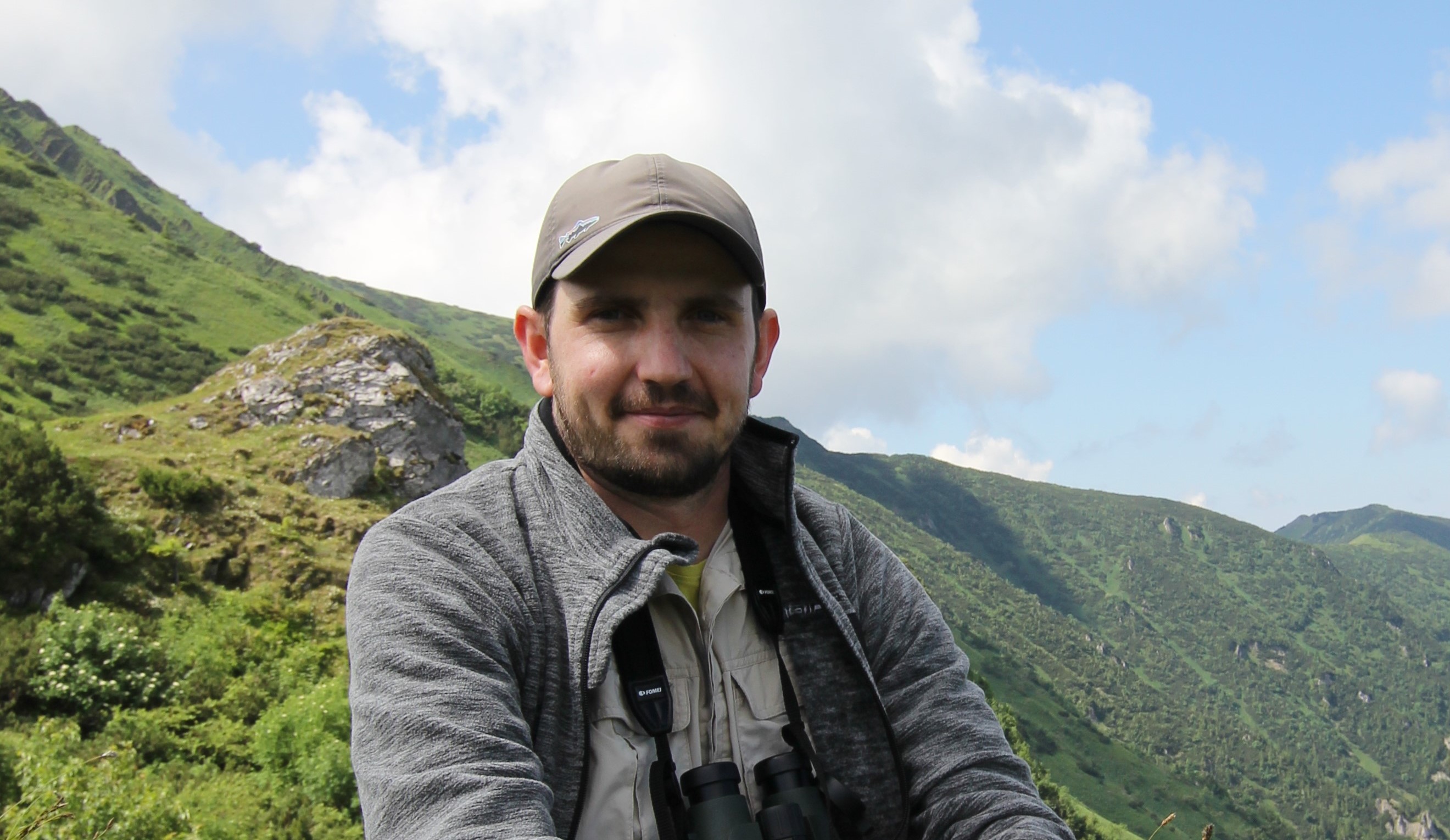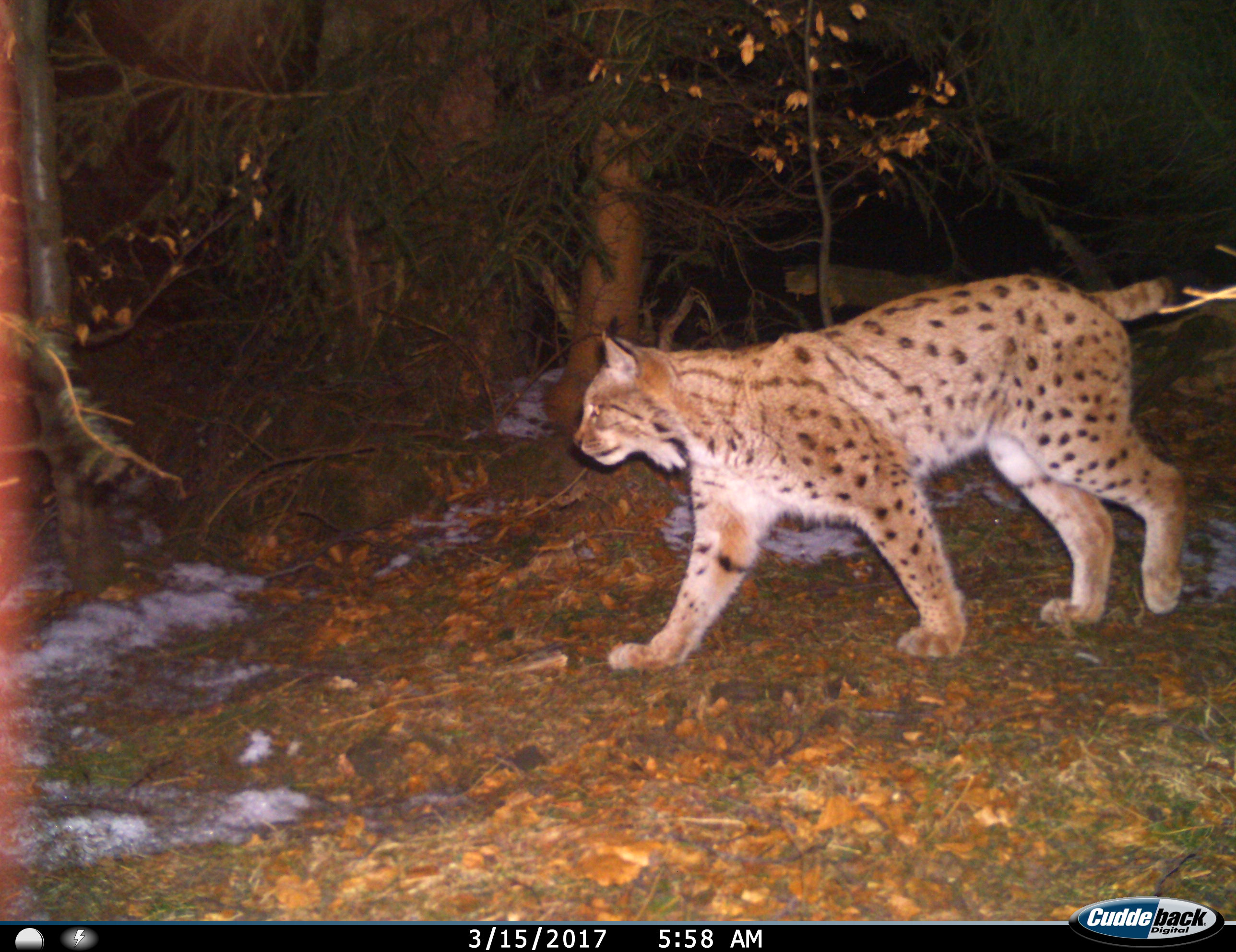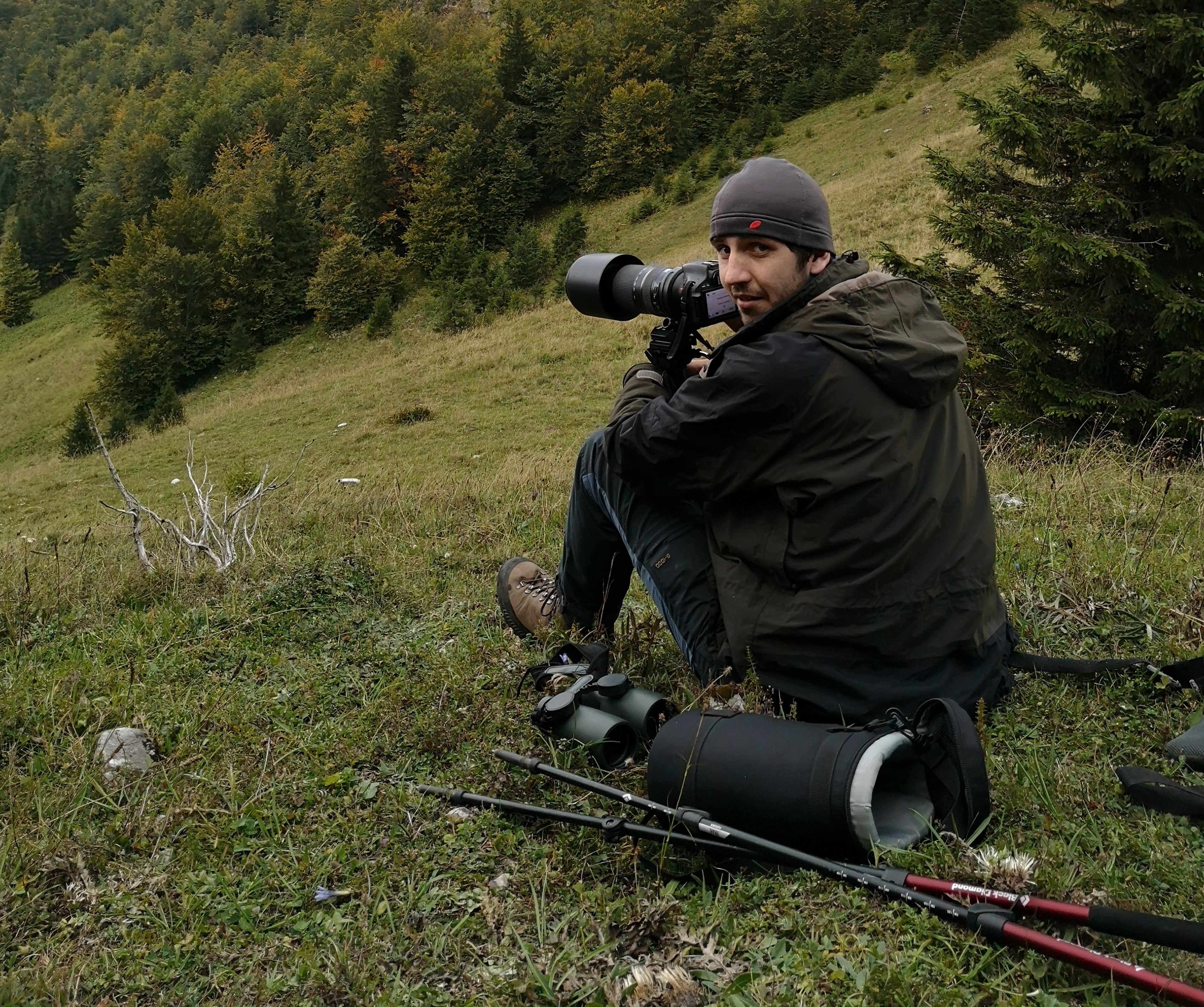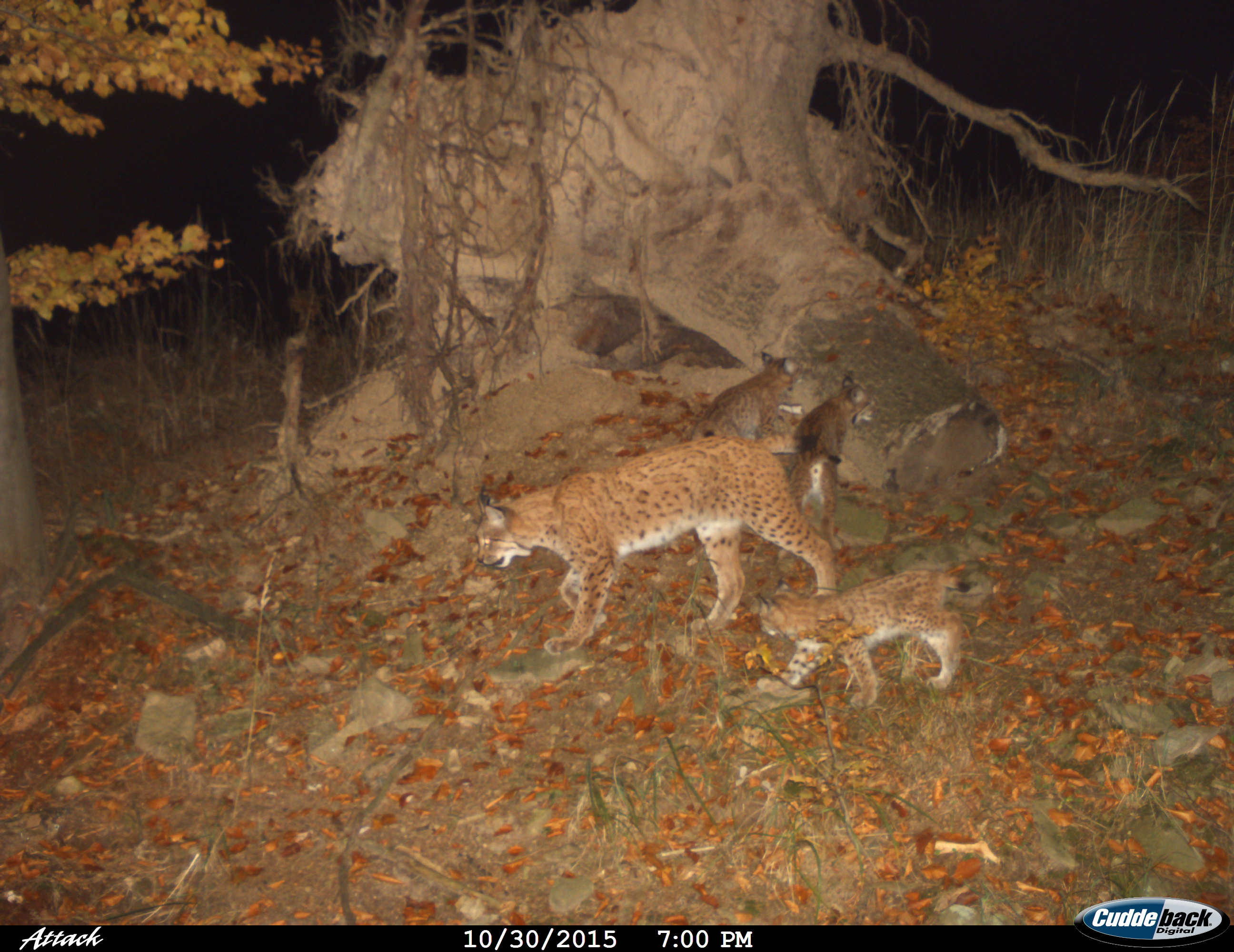SaveGREEN - The mystery of the disappearing lynx in Beskydy
29-11-2021
Scientists have been monitoring the lynx population in Slovakia for more than five years. What are the reasons behind the specie’s dwindling numbers?
There might be as few as 200 lynxes in Slovakia. Poaching and road and railway collisions are obvious threats, but scientists studying lynx populations in the Kysuce, Javorníky and Beskydy Mountains are troubled to find that the species is disappearing at a faster rate than expected, and also has a shorter lifespan. Andrea Settey Hajduchova from WWF Slovakia talked with Martin Dul’a, member of the expert network Eurolynx, Eurowildcat and the IUCN Species Survival Commission, to find out why.

Scientist Martin Dul’a
Your team recently published a study that reveals fluctuating densities and high turnover rates of lynxes. What conclusions have you reached as to why this taking place?
Compared to previous studies of lynx populations in Europe, lynxes aren’t thriving in single territories for as long as expected. The lynx is a territorial animal that can typically live in an area for up to 10 years, but our monitoring confirms that this now pertains to just a small number of individuals. Just three of the 29 adult individuals – over 2 years of age – that we identified over a five-year period [2015-2019] of intensive camera-trapping remained within a single territory for any considerable length of time. This very small number demonstrates the demographic instability of the lynx in the area.
The study shows that humans are playing a role in this decline, correct?
We believe that ‘anthropogenic mortality’ is one of the most significant factors influencing the lynx population – due mainly to poaching and traffic-related fatalities. Our monitoring team documented five poached lynxes and another five deaths from road and railway collisions. We also found two orphaned kits, whose mother was likely killed.
These causes of death coincide with information from other parts of Slovakia, as well as from other parts of Europe with stable lynx populations. And we assume that the actual mortality rates are likely much higher than documented.
Your team analysed camera images from almost 45,000 days’ worth of footage, and identified 53 lynxes in the area, but what does a ‘high turnover rate’ mean?
This means that the lynxes had enough free territory and available prey to remain in a given area, but nevertheless disappeared after a few years and did not reappear in adjacent areas.
We’ve been monitoring the lynx in the Kysuce, Javorníky and Beskydy Mountains for quite a long time. Two of the longest-monitored females are Draža and Hermína. Draža turned 12 last year and still leads her young. Hermína was a resident female in the Javorníky Mountains and lived for 10 years. She died last year, but we don't know the cause of her death.
Amongst the males, the longest-monitored lynx individual is Olda, who lived nine years: he was a victim of poaching. We monitored another male, King, for seven years before he, like many others, simply disappeared.
Of 53 monitored individuals, only a fraction has remained in the territory for as long as 7-12 years, while the others have disappeared after 2-3 years on average. It's alarming. Where are they? If we have a lynx that can live for up to 12 years, why does it not reappear in a neighbouring territory? Are those that remain just lucky, or have they become more skilled at avoiding poachers and avoiding traffic? It could be a combination of these factors, or it’s something else that we’re not yet able to clarify.
 Olda, a monitored male lynx who fell victim to poaching. Courtesy of Hnutí DUHA, Olomouc
Olda, a monitored male lynx who fell victim to poaching. Courtesy of Hnutí DUHA, Olomouc
Based on your results, the lynx population in Slovakia is estimated at between 193 and 337 individuals. Given these numbers, should we be concerned about the specie’s long-term survival in the country?
We can say with certainty that the lynx population in Slovakia has been stagnating for a long time. Compared to a bear or a wolf, the lynx does not spread significantly to other mountain regions.
A comparison of the data from our study alongside historical data from other studies that have monitored lynx population in other areas shows that the lynx does not occupy marginal areas of the Carpathians, despite the fact that there are suitable habitats and sufficient prey. We believe that the reason is strong anthropogenic pressure – from poaching to habitat fragmentation.
 Monitoring lynx on site. Courtesy of Martin Dul'a
Monitoring lynx on site. Courtesy of Martin Dul'a
Has long-term monitoring enabled you to establish the identities of victims of poaching and traffic collisions?
Our five cases of poaching were documented by chance. The actual mortality rate from poaching is certainly higher, but with such large areas and such a low population density of animals, we’re not able to document every case.
The last documented poaching case is from last year, when we received a report about an injured lynx. It was stressed and injured, and suffered from hunger and pain. We took the animal to a veterinarian, but it died overnight. Sadly, we confirmed that this was Olda, who was born in 2011 and lived for nine years on the Czech-Slovak border in the Javorníky Mountains.
Another tragic case was Lenka, who was found on railway tracks near Mořkov. Her death was great loss. Lenka raised nine cubs, and at the time of her death she was expecting the birth of three more.
Five lynxes were documented as having died due to road or railway mortality. WWF, with partners Hnutí DUHA Olomouc (Friends of the Earth Czech Republic – Olomouc local group) and State Nature Conservancy, have been monitoring the migration routes of large carnivores in Kysuce, Javorníky and Beskydy for a long time. The ongoing SaveGREEN project is a continuation of the ConnectGREEN and TRANSGREEN projects. Have these efforts helped you to determine if these lynxes have died in areas established as critical for migration?
In these specific cases, we didn’t find them in sections that are most critical in terms of migration and connectivity. There are, however, places road traffic poses a significant threat. One such area is near Horný Hričov, a village close to Žilina. Several animals have died here while trying to journey north from the Strážov Mountains to Kysuce.
Critical points are now well known, thanks to local ecologists and projects such as TRANSGREEN, ConnectGREEN and SaveGREEN. Now, it’s up to the state administration, ministries and the National Highway Company to take action and finally implement effective measures based on collected data – green bridges, overpasses, underpasses and so forth.
The Czech Republic offers a good recent example: migration corridors for large mammals have legal protection from 2020, and this extends to any surrounding spatial planning.
This is certainly a good decision, but we’ll have to wait and see how it works in practice. The reality is that the Czech Republic is not such a good example in terms of measures taken thus far. There are still only a handful of truly functional green bridges in the country. They are building more eco-ducts along the highway from Brno to Prague, but we’re not yet sure how effective they’ll be in protecting large mammals such as the wolf, lynx or elk.
The better examples come from neighbouring countries. Austria, for example, is a leader in terms of construction and installation of functional eco-ducts for smaller animals. Poland and Croatia, meanwhile, both have several effective green bridges that accommodate large carnivores.
 Hermína with her kits. Courtesy: Vlado Trulik, Hnutí Duna, Olomouc
Hermína with her kits. Courtesy: Vlado Trulik, Hnutí Duna, Olomouc
What about the two orphaned kits that were found?
Both were discovered in the area where we carried out intensive camera-trapping – PLA Kysuce and NP Malá Fatra. One died of hypothermia, stress and exhaustion. The second would not have been able to survive the upcoming winter in the wild without the mother, so she was brought to the rescue station for injured animals in Zázrivá, Slovakia. Happily, she recovered and was eventually released back into the the Malá Fatra National Park.
If one or more young are roaming somewhere, it most likely means that poaching has claimed the mother. This was the case of Laura, who was shot in the Beskydy in 2018 at a time when she was looking after her kits. We made a great effort to find them afterwards, but were unsuccessful. It’s almost certain that they didn’t survive on their own.
Your research points to faster turnover for females than for males. Why is this?
This surprised us! We expected higher turnover for males because they are more mobile, have larger home ranges, and – especially during the mating season from February to April – are ‘more visible’. In short, they’re much more likely targets. Faster turnover in females confirms the influence of the anthropogenic factor, and we need only consider the sad fates of Lenka and Laura in this regard. It’s also possible that manmade migration barriers have more lethal consequences for the female lynx population.
Is it more difficult for females to cross these barriers?
We have data about individuals moving over long distances. We documented, for example, a sub-adult male (less than 2 years of age) that was born on the Czech-Slovak border and died while searching for new territory on the highway near Brno, which is more than 130 kilometres away ‘as the crow flies’. There are such adventurers in every population, but there are also males that are not able to traverse such long distances – and then there are female lynxes, the most critical individuals, who lack that kind of ranging ability.
We have yet to document a single female that has moved from a core lynx area – say, from the Mala Fatra National park, or from PLA Kysuce – to the other side of the Kysuca River to the Javorníky or Beskydy Mountains in Czech Republic, settle there, and have offspring. The entire Kysuca River valley is already one huge barrier: there’s a road and a railway, another highway being built, and villages that are expanding in such a way that the last means of connectivity have been lost.
We have to make the Kysuca River valley accessible so that females can move through it, and this must be kept in mind when building the D3 highway. We now have a stable number of reproducing lynxes in the Beskydy Mountains, but if only one is poached, the population is endangered. Following Hermína’s death in Javorníky, there is not a single reproducing female in the area. Therefore, we need to address anthropogenic influences, crack down on poaching, make critical areas accessible – even for the less adventurous individuals – and protect suitable habitats for lynx.
Follow the SaveGREEN stories here in te news section, or on Facebook and Twitter to stay updated, or subscribe to our newsletter to gain more project insights! Save nature: SaveGREEN!
Author:
Andrea Settey Hajduchova, WWF Slovakia
